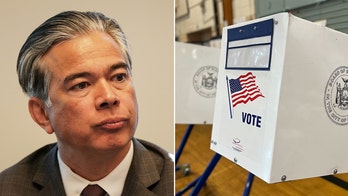Jay Carney is giving new details about his tenure as White House press secretary, as the former Time magazine journalist prepares to leave after more than three years on the job.
Carney, 49, announced last week he was leaving his post to devote more time to his family and return to the private sector.
During an interview with PBS, Carney was candid that he isn’t likely to return to his reporter roots.
“I don’t think I see that in my future,” he said. “I – you know, maybe I’ll write some more. But I don’t think I’ll be out there, you know, going after the story the way I used to. Although I still have fond memories of doing that.”
As for what drove him to make the leap away from journalism, Carney said he initially joined the Obama/Biden team because he "believed in what they were doing." He said he first made a call, to his friend Tony Blinken (now deputy national security adviser), to inquire about a job.
During the interview, Carney also addressed the growing controversy with Army Sgt. Bowe Bergdahl, who was freed from Taliban captivity in exchange for the release of five Afghanistan terror leaders from Guantanamo Bay. He also addressed government transparency, the changing media landscape and the politics behind White House press briefings.
When asked about Berghdal’s release and the message it sends, Carney responded: “When your son or mine, or daughter, or anybody else’s puts on the uniform of the United States voluntarily and goes to war, there’s a contract that we make with them, which says if you go missing, we go find you. And there’s no – there’s no condition on that.”
Carney, who was part of the White House press corps and covered President Clinton and President George W. Bush, said making the leap from reporter to being on the other side of the podium had its challenges.
“I only knew just the very surface about strategic communications and, you know, making decisions about how to – how you want to say things, how you want to frame policy choices,” he said.
Carney also says the use of social media sites and 24-hour news cycles have changed the way the press and the White House interacts.
“At the briefing room – I – you know, half the questions I get are people looking at their iPhone or Blackberry and saying, ‘Jay, I just saw this on Twitter,’ or ‘I just saw this, you know, break, and can you respond to this?’”




